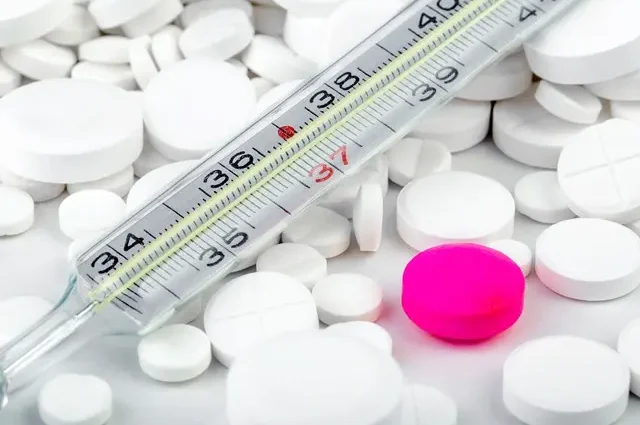For over 30 years, it has been soothing pain and reducing fever for billions of consumers around the world. It works quickly and effectively. Based on all the available information, the association of ibuprofen with the deterioration of COVID-19 or an increased risk of contracting the disease turned out to be another fake news.
The Beginnings of the Pain Killer
Ibuprofen belongs to the group of non-steroidal anti-inflammatory drugs (NSAIDs), the action of which mainly consists in inhibiting the activity of the cyclooxygenase enzyme, which is involved in the synthesis of prostaglandins, i.e. transmitters that stimulate pain receptors.
The history of the drug began 64 years ago, when Dr. Steward Adams began working on an alternative to the slowly absorbing and gastric irritating acetylsalicylic acid (aspirin). In 1962, the British drug manufacturer Boots Healthcare obtained a patent for ibuprofen, initially called Brufen. In the following years, on the basis of clinical tests, it was possible to prove its anti-inflammatory effect.
This allowed ibuprofen to be used for the first time in 1969 as a drug with analgesic, antipyretic and anti-inflammatory effects. In 1983, Boots obtained the status of an OTC drug for ibuprofen, meaning an over-the-counter drug. Since then, ibuprofen has become one of the most widely used antipyretic and analgesic drugs, also for children. Currently, it is available in over 90 countries around the world.
Unlike paracetamol, which acts mainly centrally, ibuprofen, like other NSAIDs, provides targeted pain relief. The favorable safety profile as well as the speed and effectiveness of action have made ibuprofen one of the most important drugs necessary in the primary care system. Importantly, to this day, it remains the only NSAID that can be given to infants from 3 months of age.
Ibuprofen in COVID-19 therapy
Even in early March, conflicting reports appeared in the media indicating that the use of ibuprofen may be associated with worsening coronavirus infection. The discussion on the possible effects of ibuprofen on the severity of COVID-19 symptoms began after the publication of the letter in the Lancet journal.
The authors from Switzerland and Greece put forward a hypothesis about the potential relationship of the clinical course of SARS-CoV-2 infection with the use of drugs that affect the expression of type 2 angiotensin converting enzyme, i.e. a receptor necessary in the process of viral invasion into the cell.
A few days later, the World Health Organization recommended that people with COVID-19 symptoms avoid taking ibuprofen. The European Medicines Agency (EMA) also spoke on this matter. Its experts said that there is currently no hard scientific evidence to support the link between ibuprofen and the worsening of COVID-19.
EMA ensures that it monitors the situation on an ongoing basis and carefully analyzes any new information available on the ongoing pandemic. Following the announcement of the European Medicines Agency, the World Health Organization changed its recommendation. Currently, WHO sees no obstacles to the use of ibuprofen in the treatment of COVID-19.
We are in contact with doctors treating COVID-19 and we have not heard any reports about the negative effects of ibuprofen, apart from commonly known side effects occurring in specific groups of patients – the WHO published in its speech.
A similar position was published by URPL (Office for Registration of Medicinal Products, Medical Devices and Biocidal Products) on March 18, 2020. Similar declarations were issued by similar offices in Spain, Croatia, Bulgaria, the Czech Republic and Norway. All pointed to the lack of data confirming an exacerbation of infection caused by COVID-19 with the use of ibuprofen.
In summary, in light of the latest information, there is no reason for patients taking ibuprofen to stop treatment. This is especially important for people taking NSAIDs for chronic diseases.










